Over the past decade, LED lights have stormed the lighting industry and still continues to be growing in their popularity. Whether you want to use them for utility purposes such as lighting up your backyard or aesthetic/decorative purposes such as add mood lighting for your room, LED lights have become the go-to option when it comes to lighting alternatives.
Table of Contents
So you may ask – What are LED lights? And how do they work?
LED Lights are a highly energy-efficient lighting technology. LED stands for light-emitting diode, and in simple terms, it means that LEDs are electrical components that converts electricity into light.
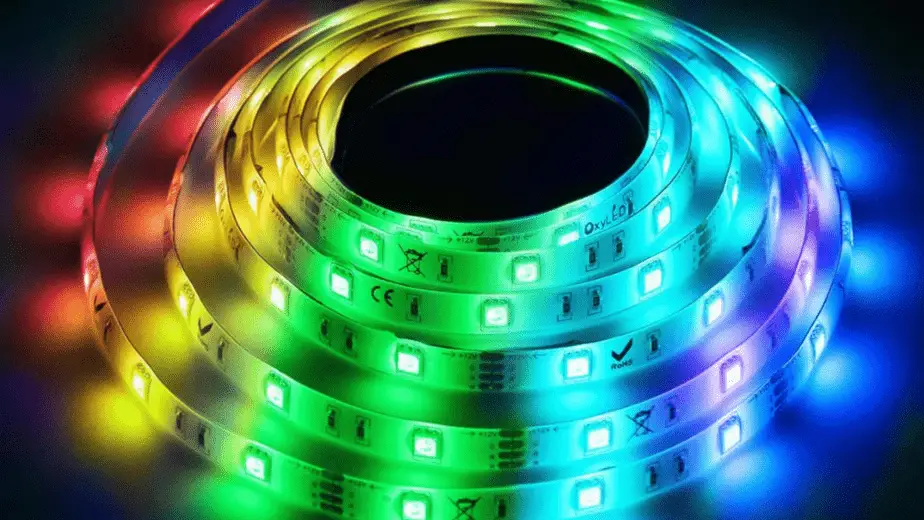
You may ask, how is that any different from traditional lights? Well, it turns out that LEDs require a lot less energy to work, which means that they’re some of the most energy-efficient lights out there.
Another huge advantage of LED lights is that they come in various colors. In addition to the traditional white colors, LED lights are also available in other colors. Depending on the product you purchase, you may be able to set your LED light colors to whatever color you want.
And Finally, LED lights come in various types and sizes, which allow you to choose the perfect kind of LED lights depending on your needs.
As LED lights are cost-friendly, energy-efficient, diversely colored and versatile, they are easily the most all-around lighting option out there.
In this article, we are going to be talking about all the types and options of LED light colors that are available out there. We’ll also go over what LED light colors are best for your needs and how different LED light colors affect us in different ways.
Getting to Know LED Light Colors
When we usually talk about LED light colors, we mainly indicate two general color areas. These are White LED lights colors and RGB LED light colors. However, besides these two, there is also another type of LED light color known as RGBW LED light colors which we’ll discuss as well.
White LED Light Colors
As you can guess from the name, white LED lights are basically one of the simplest forms of LED lights that come in only one color, white. These are the most commonly used LED lights out there, as white lights usually make up most of the lights used for utility purposes.
The LEDs can’t actually generate white color naturally, so instead, they combine blue light with yellow phosphor to give the appearance of white light.
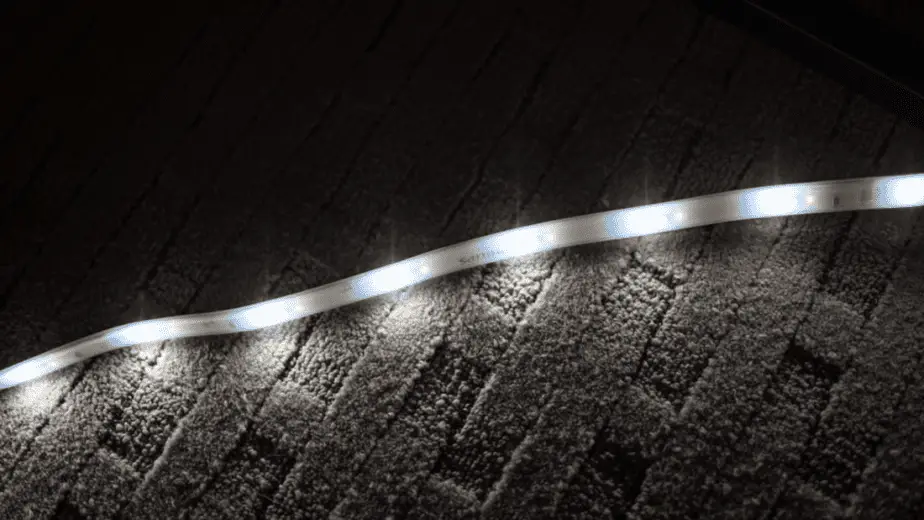
White LED light colors are mostly used in street lights, office lights, floodlighting, etc. One of the biggest advantages of white LED lights is that they are cheaper than RGB and RGBW LED lights and usually last longer.
It should be mentioned that white LED light colors do come in various shades, and these shades usually vary on the warmth of the white color. We’ll discuss this in detail as we go along.
RGB LED Light colors
Unlike white LED light colors, RGB LED lights contain a different technology which can be used to generate more than just white light. The technology allows these lights to generate any color from a range of an unbelievable 16 million possible shades of LED light colors.
A standard RGB LED contains 3 chips. These chips can generate Red, Green or Blue LED light colors. So the LED is able to generate any of these 3 colors by lighting up the chips in those colors. But here is where it gets really interesting.
Even though the chips can only generate Red, Green or Blue colors, they can generate varying levels of these 3 colors to generate whatever color you want.
These LED light colors are becoming more and more popular. They’re commonly used for decorative lighting, mood lighting, etc.
RGBW LED Light Colors
RGB and RGBW LED lights work mostly on the same principle. However, instead of having 3 chips (Red, Green and Blue), an RGBW LED contains 4 chips, namely Red, Green, Blue and White.
You may think that the white light chip is unnecessary as an RGB LED can already generate white color, but you’d be wrong.
The truth is, a standard RGB LED light strip cannot produce pure bright white. It can get close to white, but the LED light color will have a slight red, green or blue hue to it. As an RGBW strip has a chip for a white light, it can produce a much brighter and purer white.

In addition to that, having an additional white light allows RGBW LEDs to produce even more color variations. The colors tend to be more vibrant and fuller, as the white light allows the strips to control the brightness of the LED light colors to a higher extent.
Understand LED Light Colors Meaning
Before considering the type of LED light colors you want to buy, first you need to think about why exactly you need lighting options. With huge developments being made in developments of LED lights, nowadays you can find a unique kind of LED light strip for every different purpose.
So you need to carefully compare your needs with the options available before you pay for something that doesn’t suit your needs.
First, you need to identify exactly why you need LED lights. The kinds of lights suitable for outdoor lighting will be different than the ones suitable for indoors. Even then, there are a lot more classifications within these categories.
As far as outdoor lighting goes, the best LED light colors for illuminating a street will be different than that of your patio or backyard. In order to differentiate among the different kinds of colors, we need to talk about the Kelvin Scale.
The Kelvin Color Temperature scale is used to describe the way various light temperatures appear visually. The scale ranges from 1,000 Kelvin to 10,000 Kelvin.
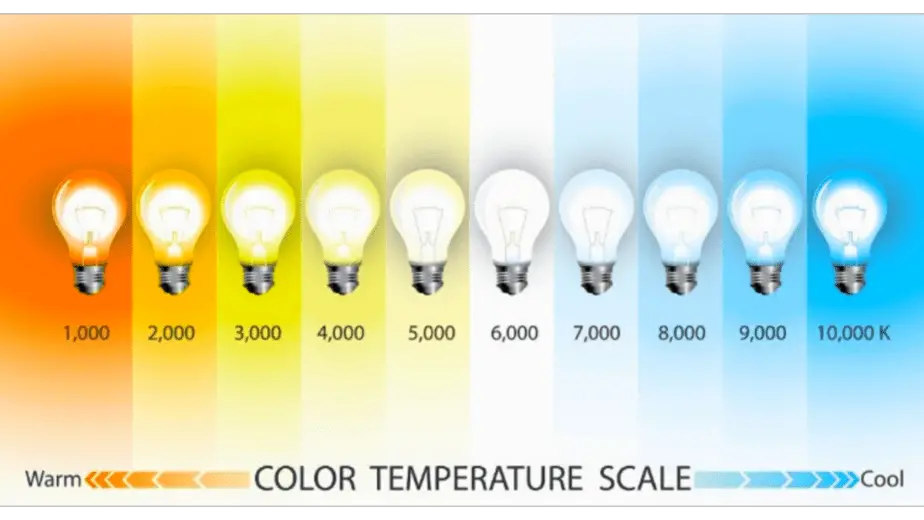
The lower end of the scale comprises of the warmest colors such as orange and yellow. As the scale goes up, the color temperature gets cooler and bluer, thus the higher end of the scale comprises of the bluish white colors.
LED Light Colors for Different Moods
According to various research, different colors of light can generate different kinds of chemicals and hormones in our brain, which generate different kinds of emotions in our mind. Therefore, by choosing a certain LED color light, we can scientifically generate certain emotional responses.
For example when it comes to an office space, using white lights of a certain temperature can increase focus and productivity of everyone present under that light. Using a cooler light that generates relaxing feeling will not be suitable in this case.
White LED Light Color
As mentioned earlier, different color temperatures of white light will generate different emotions in our mind.
On the lower end of the Kelvin scale, the color temperatures usually provide a tranquil and peaceful emotion. As the color temperature shifts towards cooler or bluer colors, they tend to generate emotions regarding productivity and attentiveness.
The Soft white LED color lights usually range from 3000K to 3500K. These temperatures of white light are similar to that of early mornings or late evenings. As a result, these temperatures are best for generating a calming and relaxing emotion, which is perfect for getting ready to start the day as well as loosening up at the end of a busy day.
The cool white LED light colors range from 4000K to 5000K. Just like the soft white colors, these temperatures replicate the outside light during late mornings to early noon. Because of this, these temperature of white lights are perfect to get the productivity going. These shades of light are best for generating refreshing and energizing emotions.
The Daylight Light color temperatures range from 5500K to 6500K. These color temperatures are mostly seen from the hours of noon to afternoons. In general, in these hours humans tend to be the most productive. Therefore, it is natural that these temperatures generate emotions of alertness, focus and discipline in the human brain. As a result of this, high energy work environments such as factories use these temperatures of light.
RGB LED Light Color
According to research, these are the emotions that are generated by various shades of RGB LED color lights:
Yellow: Optimism, Clarity, Warmth
Orange: Friendly, Cheerful, Confident
Red: Stimulating, Bold, Vital, Courageous
Purple: Youthful, Energetic, Exciting
Dark Blue: Wise, Creative, Imaginative
Blue: Trustworthy, Strong, Dependable
Light Blue: Unique, Soothing
Green: Balance, Harmony, Health, Growth
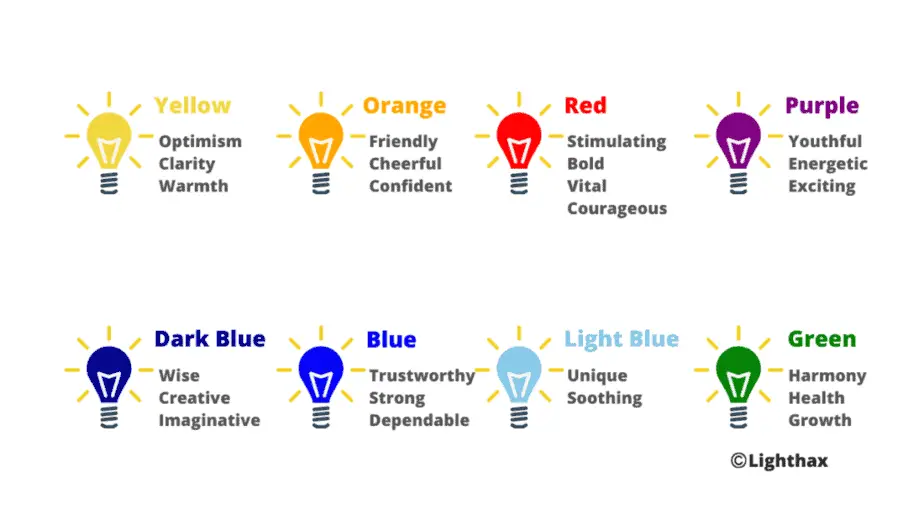
Warm, Cool, And Daylight LED Colors: Where To Use Them
When it comes to white LED light colors, you can’t just buy something without any research and expect it to fulfill your needs. As we said earlier, white LED lights of different color temperatures are best suited for different purposes. A 3000K LED light will be different compared to a 4000K LED light.
Let’s take a detailed look at the most appropriate uses of different temperatures of white light.
Soft And Warm White LED Light Color (2700K to 3500K)
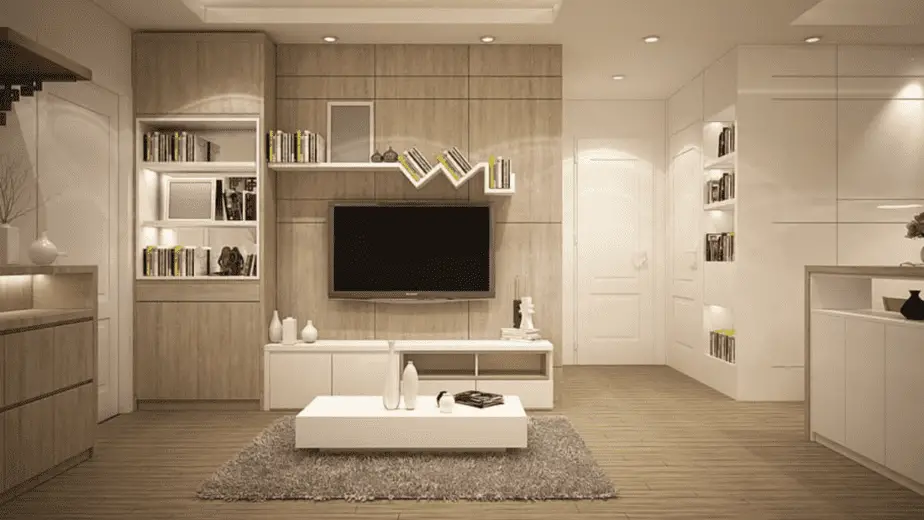
As mentioned earlier, soft and warm white LED light colors are best suited for a calming and relaxing environment. Because of this, we usually see these colors used in residential settings.
As the color temperatures contain an orange-yellow hue, these lights put a lot less strain on the human eye. This makes them perfect for use in areas where we feel peaceful and not stressed.
The most common uses of soft and warm white lights generally include areas of the house such as the bedroom, table lamps, bathroom, closet, etc.
Outside of residential use, these temperatures can also be seen commonly in the food and hospitality industry. This means that most hotels and restaurants use these LED color lights, as they want their customers to feel at peace and calm.
Cool White LED Light Color (4000K to 5000K)
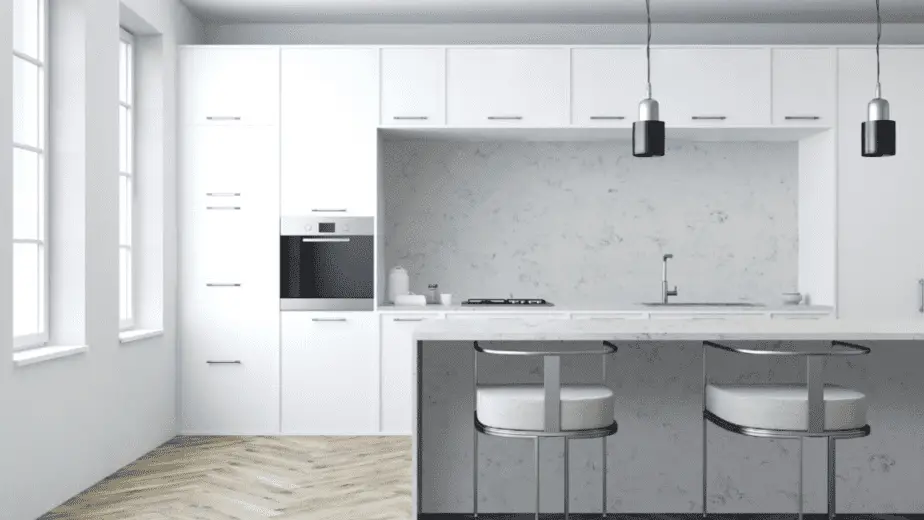
Cool White temperatures are best for environments that are a little busier than residential settings. As we said before, these lights are similar to the ones of late mornings to early noon when productivity starts increasing.
Even in residential settings, cool white lights can be used in certain areas. Areas like your kitchen and your garage are best suited for cool white LED color lights. This is because these areas of your house are mostly for utility purposes.
However, the most common uses for cool white can be seen in office spaces, hospitals, shopping centers and stores, etc.
Daylight LED Light Color (5500K to 6500K)
Daylight LED Light Color (5500K to 6500K)
As daylight white temperatures replicate the light seen from noon to afternoon, it makes sense that these colors are perfectly suited for environments that are very busy and require high energy and motivation.
When it comes to office areas, areas such as meeting rooms and workshop areas are best for using daylight LED light colors.
Outside of professional areas, these lights can be used in Gyms, running and cycling tracks, etc.
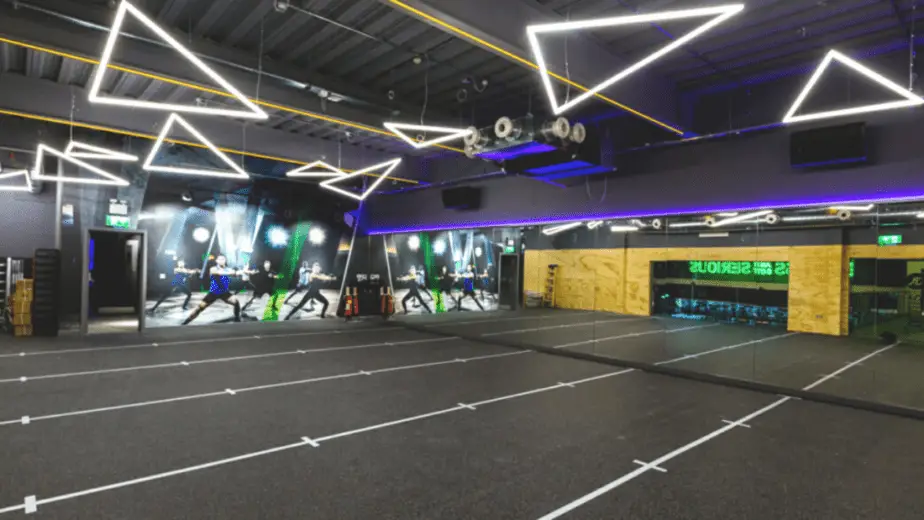
Daywhite LED Light Color (7000k To Up)
Daywhite color temperatures are best for illuminating large areas. Parking lots, parks, factories, production lines, floodlights, etc. Are best for daywhite LED light colors.
RGB Color Changing LED Lights: Where To Use Them
As we talked about earlier, the growing popularity of RGB LED light colors are mostly due to decorative/aesthetic purposes. As these lights are able to change colors, they can be used in a single area to generate a range of moods.
In terms of residential use, they can be used in bedrooms and living rooms for mood lighting. Additionally, the use of LED light strips behind TVs and furniture are becoming popular. Sticking LED lights on walls are becoming popular as well.
LED lights are also becoming popular in the car modifying area as they are used for illuminating the interior as well as the engine bay of cars.
As they’re much cheaper to buy and maintain, colored LED lights have already started replacing traditional neon lights. We see them more and more everyday in restaurants, bars, clubs, etc.
The Effects of Surroundings and Situations on LED Light Color
The way we perceive color depends on how light reflects off of other objects into our eyes. Therefore, the LED color light you buy may change depending on what environment you’re lighting.
For example, if you want to buy a soft white LED color light (2700K to 3500K) because you want the light to have a slight yellow tint, you want to make sure that the room you’re illuminating is of a neutral color.
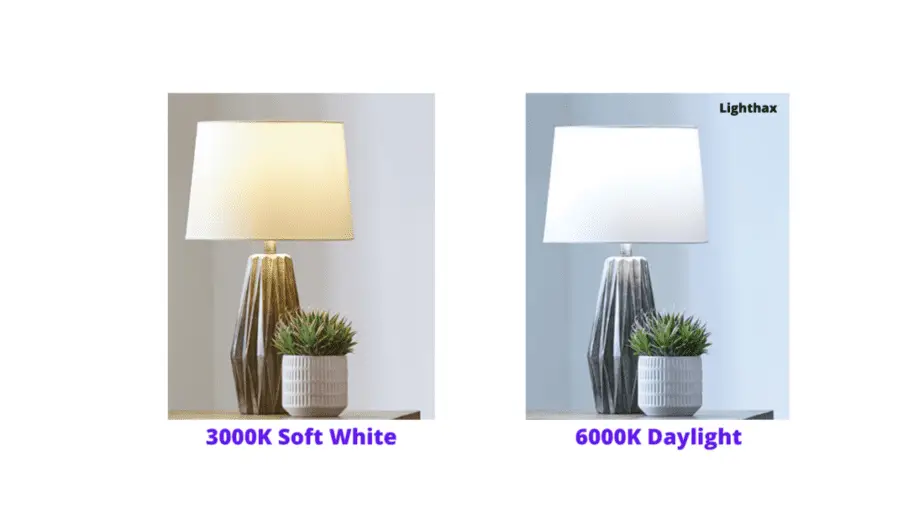
If you’re room is painted in a shade of blue, the soft white light will likely have bluish undertones as it reflects off of your walls. This will make it seem as if the light is not the shade of white you purchased.
The same goes for LED color lights. You want to make sure the color of the area which you’re using your lights in complements/combines well with the color of your LED lights.
We mentioned earlier that the color of your surroundings affect what kind of emotions you feel. Therefore, consider how you’ll feel under certain colors. You don’t want to use daylight white LED lights to use in your bedside lamp, as the bluish tones of the white light may not help you relax and wind down.
What Color LED Light Helps You Sleep
When it comes to picking the best color lights for sleeping, there are various studies backed by research that show that certain colored LED lights work better than others.
Warmer colors such as red, orange and yellow are best for sleeping when it comes to LED lights. These lights have a high wavelength. Our brain releases a hormone called melatonin which helps us fall asleep. These high wavelength lights do not prevent production of melatonin, thus helping us fall asleep faster.
On the other hand, lights with low wavelengths such as blue and purple stop melatonin production, which keeps us awake for much longer. So these colors are not great for sleeping.
Green is another color that can be good for sleeping. Our brain associates green with nature, which can generate calming emotions.
Read also: 4000K vs 5000K LED Light Color Temperature
Frequently Asked Question
What Is the Healthiest LED Light Color?
For white lights, we recommend cool white LED light colors (4000K to 5000K), as it contains both warm and cool undertones. This generates a combination of relaxing and motivating emotions in our brain.
For colored LED lights, warmer lights such as orange and yellow are better for relaxing.
Blue LED light colors are said to be damaging to our eyes. Experts suggest avoiding exposure to blue light for long periods of time. This is one of the reason why phones, tablets and laptops have a blue light filter.
What Color Is Best for LED Lights?
At the end of the day, the best color for you is the one that matches your needs.
If you want to be in a relaxing environment, the best choice is to go for soft white LED light color or warmer colored LED lights such as yellow.
If you want to simulate a high energy and motivational environment, the best option would be to go for daylight LED light colors or cooler colored LED lights such as blue.
The best thing to do is identify exactly why you’re using your LED lights.
What Are the Different LED Light Colors For?
Different colored LED lights are appropriate for different moods and occasions. One color of LED light may not suit all of your needs. Having a warmer LED light color may help you calm down, but it may not be appropriate when you really need to get some work done.
Read also: Can You Sleep with Led Strip Lights On
It’s Your Time To Choose The Perfect Color
Even with all the scientific reasoning and explanation, you may not like the LED light colors that we’ve recommended. This is because everyone’s personal taste and preference is different.
If you’re using LED lights for personal reasons such as decorative lighting, mood lighting, etc., you should go for your favorite colors as your brain will associate that color with happy emotions.
However, when it comes to considering LED color lights for professional or utility purposes, we recommend going with the options we have provided. The correct shade of LED lights can make the difference when it comes to getting work done on time or creating the right environment for work.
If you want to go for a safe option, you can consider purchasing a neutral warm white LED light color.
In terms of colored LED light options, consider a color-changing LED light strip. This way, you can change the color of your room depending on the time of the day or depending on what you want to do.
Read Also: 2700K vs 3000K – The Differences to Choose Easily

My strong expertise is illuminating spaces. With a keen eye for detail and a passion for transforming environments through lighting, my dream is to leave indelible mark on the world of light design. Below are few facts of my biography, highlighting career and hobbies. Click here to contact me.